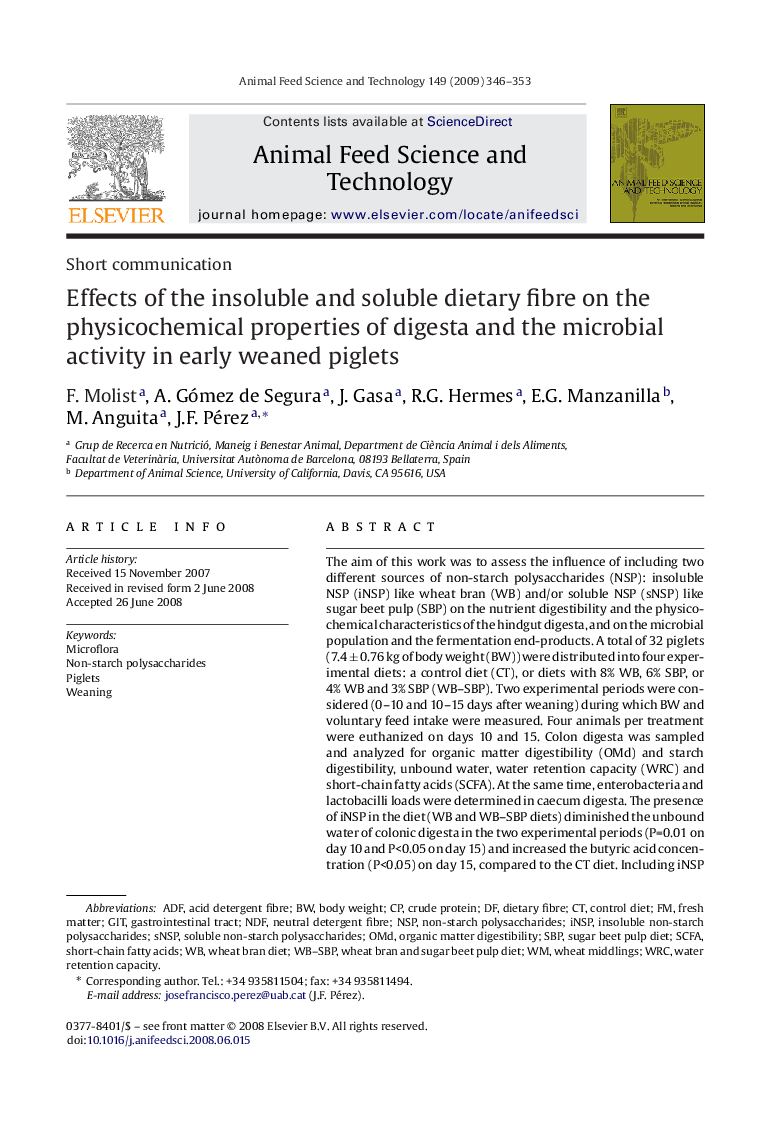| Article ID | Journal | Published Year | Pages | File Type |
|---|---|---|---|---|
| 2420490 | Animal Feed Science and Technology | 2009 | 8 Pages |
The aim of this work was to assess the influence of including two different sources of non-starch polysaccharides (NSP): insoluble NSP (iNSP) like wheat bran (WB) and/or soluble NSP (sNSP) like sugar beet pulp (SBP) on the nutrient digestibility and the physicochemical characteristics of the hindgut digesta, and on the microbial population and the fermentation end-products. A total of 32 piglets (7.4 ± 0.76 kg of body weight (BW)) were distributed into four experimental diets: a control diet (CT), or diets with 8% WB, 6% SBP, or 4% WB and 3% SBP (WB–SBP). Two experimental periods were considered (0–10 and 10–15 days after weaning) during which BW and voluntary feed intake were measured. Four animals per treatment were euthanized on days 10 and 15. Colon digesta was sampled and analyzed for organic matter digestibility (OMd) and starch digestibility, unbound water, water retention capacity (WRC) and short-chain fatty acids (SCFA). At the same time, enterobacteria and lactobacilli loads were determined in caecum digesta. The presence of iNSP in the diet (WB and WB–SBP diets) diminished the unbound water of colonic digesta in the two experimental periods (P=0.01 on day 10 and P<0.05 on day 15) and increased the butyric acid concentration (P<0.05) on day 15, compared to the CT diet. Including iNSP and sNSP in the same diet (WB–SBP) decreased (P<0.05) the enterobacteria counts on caecum digesta on day 15 compared to the CT diet indicating a synergistic effect of the two different sources on the microbial population. Consumption of diets with higher iNSP content, or the combination of iNSP + sNSP in the early weaning period modifies physicochemical characteristics and affects the microbial colonization and fermentation patterns in the hindgut.
